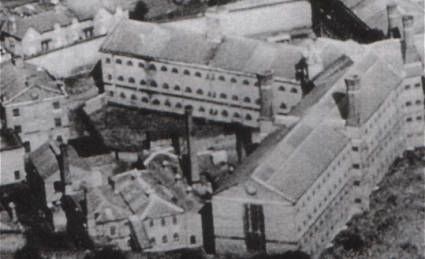The Fiancee of Danger
Every so often when you are researching for a specific project, a person in history seems to leap out and catch you unawares…this is one such individual and now that I have seen them, I do not wish to “unsee”.
As many of you know, I am a bit of an aviation nut, especially pre the jet age, and one of the talks I give is on the Air Transport Auxiliary (ATA) of the Second World War. That particular interest started when I found out they had female pilots and developed from there (I can recommend the book Spitfire Women by Giles Whittell if you would like to learn more)
I was giving my talk over the summer, and one of the questions was
“What about the First World War? Were there any female pilots then?”
I was able to say that there were none that sprung to mind, and that there certainly was not an operation similar to the ATA in place, but there were women who had their flying license. This blog is not to cover the history of flight as that is about one hundred thousand words in its own right, but more to do with the advent of fixed wing and what was to become the conventional “aeroplane”. The Wright brothers are credited with the first flight per se, 17th December 1903, and it is quite mind blowing to think that just eleven years later, aircraft were being utilised for military purposes with the First World War.
Enough of that brief history lesson, there is shedloads of information out there if that is something you want to look into, I want to focus on the fiancée of danger, an amazing woman by the name of Marie Marvingt.
Born in France in 1875, she was brought up by her father to be a very active child, her only brother being quite a fragile young lad, and this seems to be a route that she positively embraced. By the age of four, Marie could swim four kilometres – in fact she became the first French woman to swim the length of the Seine through Paris – but she was not just part fish, fencing, shooting, bob sledding, horse riding, skiing, mountaineering…you name it, she was most definitely a force to be reckoned with. In fact, her love of cycling was such that in 1908, when she was refused admission to the all-male Tour de France, she rode the course to prove she could (behind the men) and completed it – impressive anyway, but considering only a third of the actual competitors finished it, shows just how phenomenal she was.
You would think her exploits may end there, but no, there is decidedly more. Marie had her first balloon flight in 1901, by 1907 she was piloting said mode of transport and in 1909 was the first woman to pilot a balloon across the North Sea (France to England), then five years later the first woman to fly a balloon across the channel. As impressive as those accomplishments were, she was not finished. In the November of 1910 she had received her fixed wing flying license, and when war broke out in the August of 1914, she was keen to do her part, which was? To dress up as a man and serve with the French army at the front…sadly she was discovered and sent home. Not to be deterred, she ended up working with the Italians - it is said at the request of Marshal Foch – participating in military operations, maybe an information gatherer but knowing Marie, she was probably there gun in hand, just hoping that the enemy would look her way.
Are her exploits exhausting you yet? Drink that coffee, eat that biscuit, you need the energy to keep going.
She did!
Not only did she fight on the front line, she was also a Red Cross surgical nurse, medicine was something that had been on her mind for many years, as early as 1910 when she had learned to fly fixed wing aircraft, she had proposed a system of flying ambulances to the French government. These would be flown by women, and contain medical staff to enable swift evacuation of wounded military personnel to get them from the casualty clearing centres in the midst of battle to the surgical hospitals where they could be treated.
Oh, and she was awarded a Croix du guerre…for? Bombing a German base, yes, first woman to fly in combat as well.
Did this adrenaline junkie over achieving amazing human ever take her foot off the gas? Did she heck, at the age of 80 she took up helicopter lessons and for her birthday that year, the US air Force took her up in a F-101 Voodoo jet aircraft.
She had not stopped keeping fit, and at the age of 86, cycled from Nancy to Paris, only a mere two hundred miles or so. The Fiancée of Danger died at in December 1963, I think she left a lot for us to consider as to what a human is capable of.











